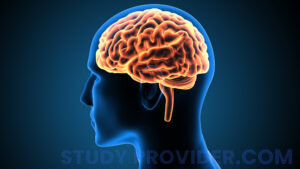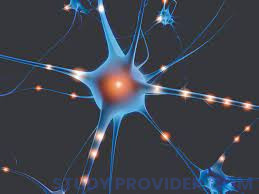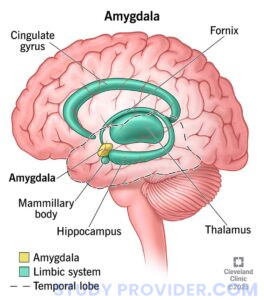In the previous blog we understand , what is brain death ? How data store in brain . How picture form in our mind when thinking something . How much the capacity of brain . What is functions of neuron . Here the link for previous blog.
In the this blog we will understand, what happened with brain when a person die ? we will also understand difference between brain death and clinical death. So let’s begins…

When a person dies, their brain undergoes a series of processes, ultimately leading to the irreversible breakdown of neurons and tissues. Here’s what happens to the brain, step by step:
- Immediate changes(within the seconds to minutes after death)
- Short term process(minutes to hours after death)
- .Long term process (decomposition of brain cells
Immediate Changes (Within Seconds to Minutes After Death)

1. Loss of Oxygen and Blood Flow:
– The heart stops pumping blood, cutting off oxygen and glucose supply to the brain.
– Without oxygen, brain cells (neurons) stop functioning properly and can no longer generate electrical signals.
2. Neural Activity Ceases:
– Within 20-30 seconds, brainwave activity, including consciousness, shuts down.
– The person becomes unresponsive, and higher brain functions like thought and awareness cease.
Short-Term Processes (Minutes to Hours After Death)

1. Ischemia (Oxygen Starvation):
– Lack of oxygen triggers ischemia, which causes neurons to release excess amounts of glutamate(a neurotransmitter).
– This leads to excitotoxicity, damaging neurons through overstimulation.
2. Brain Cell Death Begins:
– Without energy, neurons start to die off within 4-6 minutes.
– Some brain areas, such as the hippocampus, which stores memories, are particularly vulnerable to oxygen loss.
3. Residual Brain Activity (Post-Mortem Surges):
– In some cases, the brain shows a “final surge” of electrical activity a few minutes after clinical death. This may briefly resemble heightened consciousness (like what’s sometimes reported in near-death experiences).
– Scientists believe this could be the brain’s response to low oxygen or abnormal neurotransmitter release, though it’s not sustained.
Decomposition and Breakdown (Hours to Days)
1. Cellular Breakdown and Autolysis:
– After a few hours, enzymes inside cells begin to break down the brain tissue (a process called autolysis). This process starts faster in the brain due to its high fat and water content.
2. Loss of Brain Structure:
– The brain is soft and fragile, and without circulation, it starts to lose its structural integrity.
– The blood-brain barrier (which normally protects the brain) breaks down, allowing fluids to leak out.
Long-Term Decomposition (Days to Weeks)
1. Putrefaction:
– Bacteria from other parts of the body begin to invade the brain and accelerate decomposition.
– The brain liquefies faster than other organs, often turning into a viscous fluid within a few days.
2. Complete Breakdown:
– If left undisturbed, the brain will eventually break down entirely, with its components returning to the environment as gases, fluids, and organic material.
What Happens to Memories and Consciousness?
– Memories and information stored in the brain exist as electrical and chemical patterns across neural networks. Once neurons die, these patterns are lost permanently.
– Consciousness is believed to arise from the coordinated activity of neurons. When brain function ceases, consciousness cannot continue. Current science suggests that awareness and personal identity end with brain death.
—
Brain Death vs. Clinical Death
– Clinical Death: The heart and breathing stop, but resuscitation is still possible.
– Brain Death: The brain stops functioning entirely, even if life-support machines keep the heart beating and lungs working. Brain death is considered the point of irreversible death.
Summary
– Within seconds after death, brain activity stops due to lack of oxygen and blood flow.
– Minutes later, neurons begin to die off, and brain function ceases.
– Hours to days post-mortem, the brain decomposes rapidly due to autolysis and bacterial invasion.
– Memories, consciousness, and the unique patterns of neural activity are lost with the death of neurons.
This process underscores the delicate and transient nature of the brain’s function, tied closely to the body’s circulatory and respiratory systems.